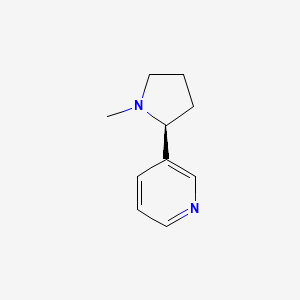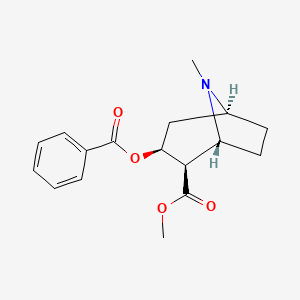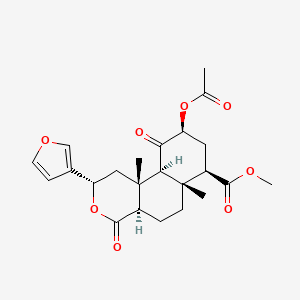So with all of this said, it may appear that our society is managing addiction right? Well, we have come a long way, and there is even research looking into "drug vaccines" as preventatives underway... however the overwhelming majority of the focus is on opioids and alcohol. Addiction to psychostimulants is also problematic and prevalent, but there are NO effective treatment options as of the date of this posting.
The good news is that research is being done, such as the work on nicotine being performed by Dr. Daniel McGehee at the University of Chicago. His experiments are modeled after prior work done by other researchers on cocaine with the somewhat surprising finding of "remarkable similarity in the mechanisms underlying synaptic plasticity induced by nicotine and cocaine in the ventral tegmental area (VTA)."
 |
| Nicotine structure |
 |
| Cocaine structure |
This leads us into the discussion of interesting other compounds that have been brought up in the literature on addiction. There have been papers published regarding Ibogaine, a psychoactive substance extracted from an african shrub that has claims of modulating opiate tolerance. However, the focus of this post is on Salvia divinorum as a potential treatment option for stimulant abuse. Scientific American Mind published an article on August 11, 2015 (link below) on this subject. The article discusses studies involving rats whose results may point to Salvia disrupting many of cocaine's effects. The article states that Salvinorin-A, one of the more than dozen chemicals contained in the plant's leaves, is the most potent naturally occurring psychedelic known; it is approximately 10 times more potent than psilocybin (one of the two psychoactive substances found in magic mushrooms).
 |
| Structure of Salvinorin-A |
None of this serves as an endorsement for Salvia use, as it is itself known as a drug of abuse with its own set of side-effects and unknowns. Rather, in the very least, I hope it does serve as a reminder to keep an open mind, for we never really know where answers may lie; I can safely conclude that we do need more resources for those struggling with stimulant abuse and addiction in general.
References:
Addy, Peter H., and Ana E. Maqueda. "Traditional Medicine from Southern Mexico Offers Help with Addiction." Scientific American. Scientific American Mind 11 Aug. 2015. Web. http://www.scientificamerican.com/article/traditional-medicine-from-southern-mexico-offers-help-with-addiction/
Mao, Danyan, Keith Gallagher, and Daniel S. McGehee. "Nicotine Potentiation of Excitatory Inputs to Ventral Tegmental Area Dopamine Neurons." The Journal of Neuroscience: The Official Journal of the Society for Neuroscience 31.18 (2011): 6710-20. Web.
http://www.jneurosci.org/content/31/18/6710.full
All images are from https://pubchem.ncbi.nlm.nih.gov

No comments:
Post a Comment